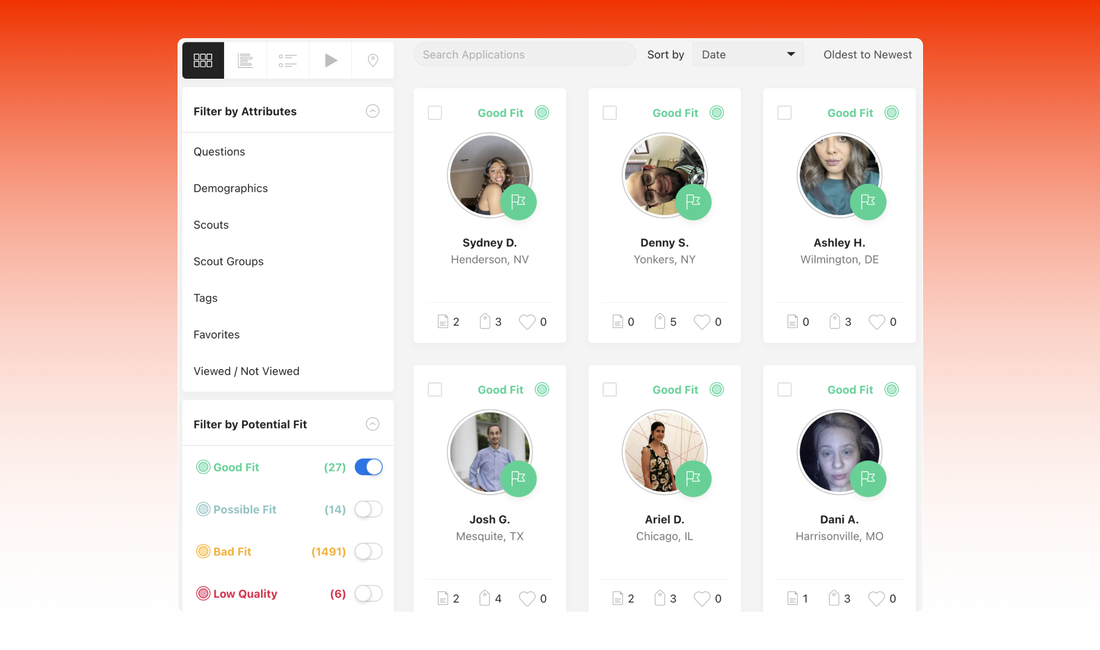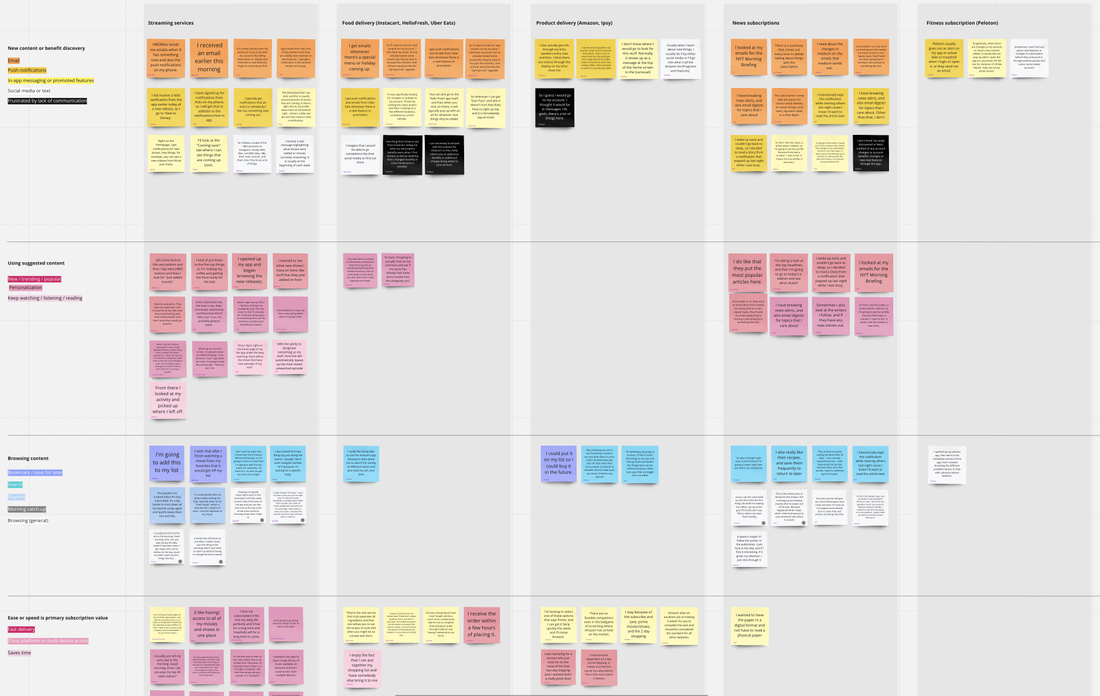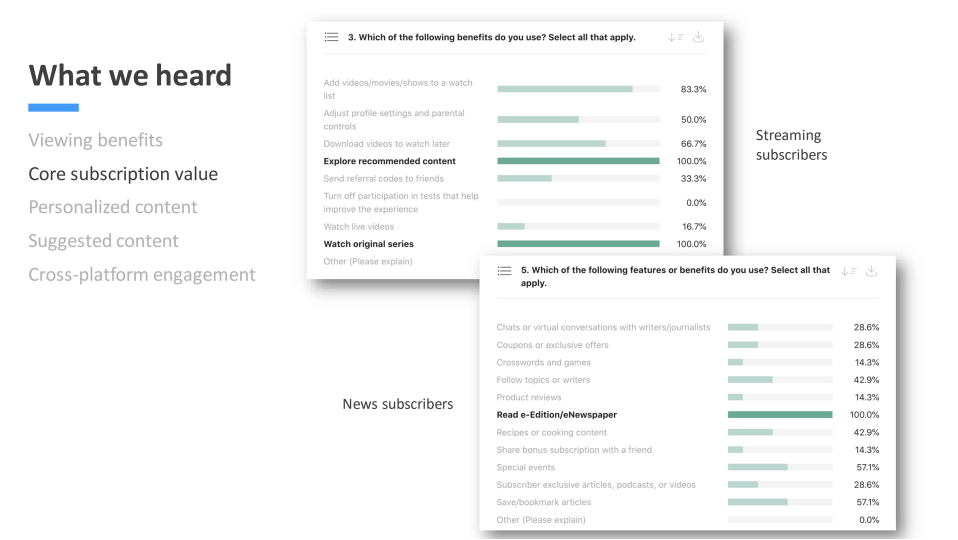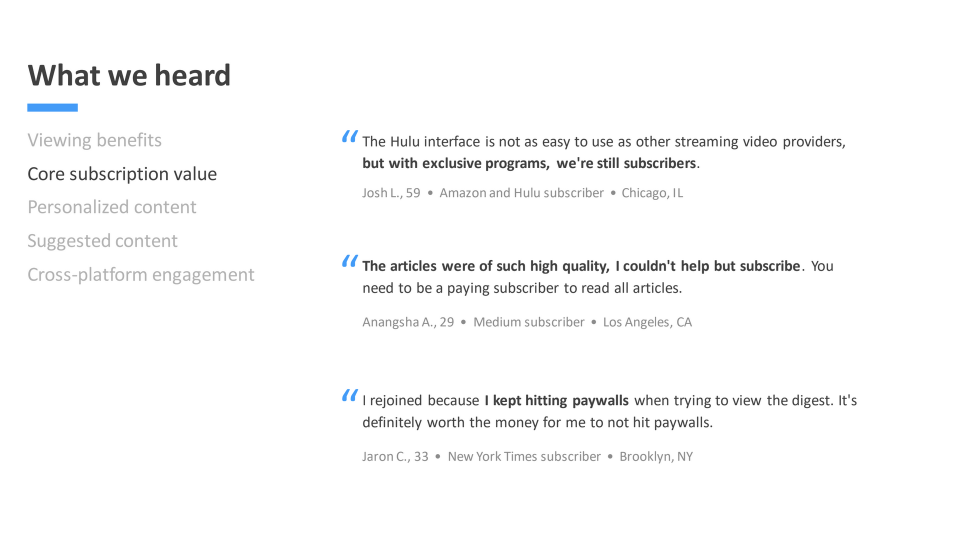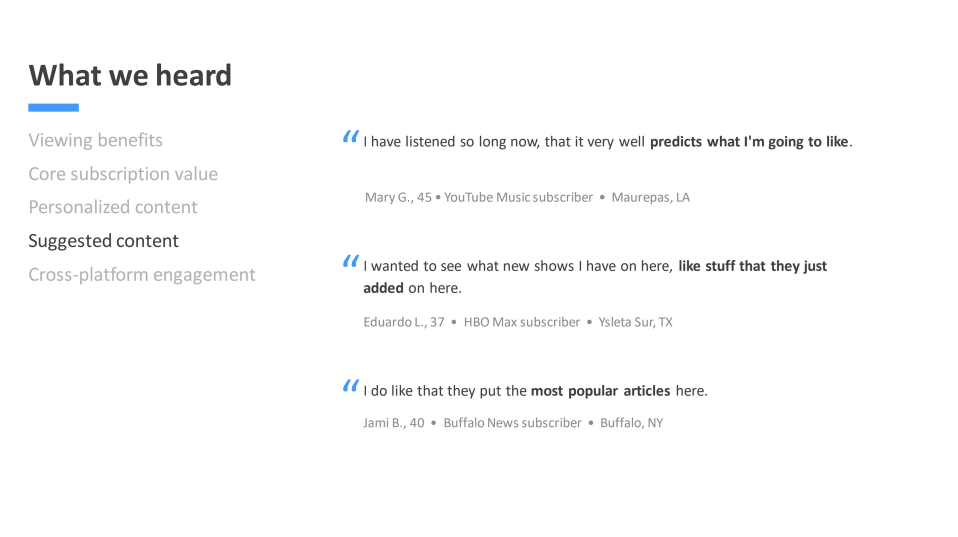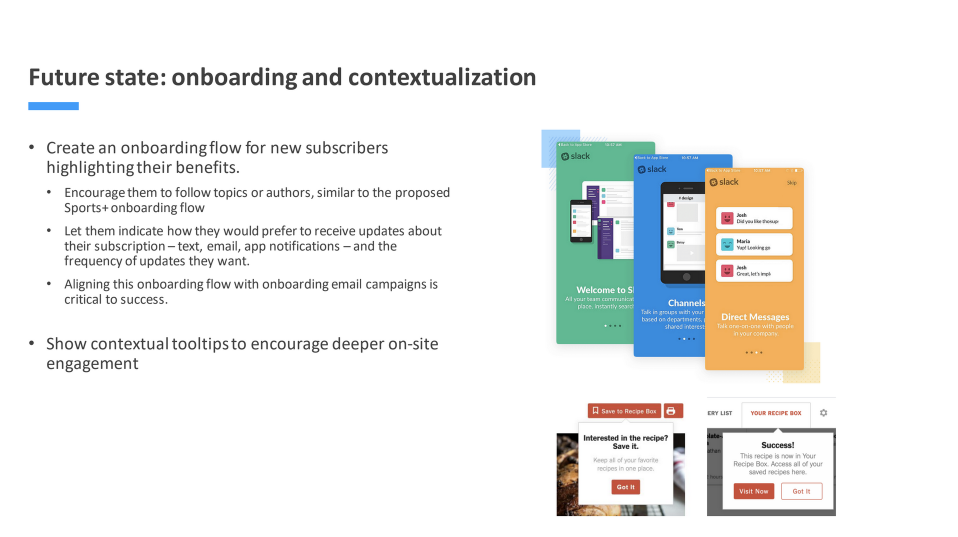Subscriber Retention Study
Overview
In mid-2021, Gannett was losing one subscriber for every two acquired. Our Data Insights team discovered through phone interviews that many news subscribers who cancelled didn’t understand their subscription benefits beyond content access.
Objective
Use qualitative research to gain insight into the benefits subscribers value and how to reduce subscription churn.
My role
I led UX research, which included:
In mid-2021, Gannett was losing one subscriber for every two acquired. Our Data Insights team discovered through phone interviews that many news subscribers who cancelled didn’t understand their subscription benefits beyond content access.
Objective
Use qualitative research to gain insight into the benefits subscribers value and how to reduce subscription churn.
My role
I led UX research, which included:
- Writing the research plan
- Selecting study participants
- Reviewing videos and survey responses
- Analyzing results through crosstab analysis in dscout
- Running group affinity mapping sessions
- Synthesizing insights
- Co-authoring the presentation with our results and recommendations.
Process and methodology
We conducted this study using dscout, a qualitative research platform that enables us to create screeners to recruit users. dscout uses in-the-moment video and screen recordings, along with written questions, where we can observe users' thoughts and behaviors over several unmoderated sessions. Note that in the slides below, we sometimes use the branded term "scouts" to discuss study participants.
This study involved various subscriptions, including video and music streaming, product delivery, news, and fitness, to determine if subscribers understood their benefits beyond day-to-day use, how they viewed and accessed their benefits, and what benefits they valued most.
Selecting participants
From 1,548 dscout applications, we chose 29 digital subscribers from across the United States, balanced by gender, age, and ethnicity, who had subscribed to their service of choice for at least a year and used it at least once per week. 27 people completed the study.
Study structure
- In part one, participants answered survey questions about their subscription, subscription length, benefits used, and why they continue to subscribe.
- Part two required multiple entries where participants recorded themselves as they used the product or service. They noted what prompted their use, rated the quality, and explained frequency of use.
- Part three focused on how participants manage their subscription, answering survey questions about how they learn about subscription updates, contact Customer Service, and what changes they would suggest.
Analysis: We drew insights from close-ended responses and user quotes from written and video responses. We exported notes and user quotes and used affinity mapping to identify themes between participants. See the full affinity map.
What we learned
- People expect subscription content to be high-quality and personalized to their needs and interests as a baseline. News subscribers rated their content as high quality, but there was less feedback about personalization than with other subscription types.
- Regardless of subsription length or usage frequency, subscribers had surface-level relationships with the products, only engaging with the few core benefits or features that initially drove them to subscribe. They only used new features if they were easily discoverable or disruptive to their day-to-day use.
- While interactions were surface-level, participants found non-news subscriptions valuable because they were integrated into their lives or made their lives easier.
- Streaming subscribers were resistant to cancellation because the service “knew” them and their preferences.
- Amazon Prime subscribers cited the lack of cheaper or easier shopping competitors. Those who used Prime Video or Echo felt Amazon was deeply integrated into their daily life and it would be disruptive to cancel.
- Streaming subscribers were resistant to cancellation because the service “knew” them and their preferences.
- Subscription exclusivity alone is not enough to drive loyalty and retention. Benefits that were a combination of exclusive, high quality, and relevant to their daily habits were viewed as the most valuable.
- If a feature or benefit was exclusive and relevant, scouts were willing to forgive lower quality.
- If a feature or benefit was high quality and relevant, exclusivity was less important.
- If a feature or benefit was exclusive and relevant, scouts were willing to forgive lower quality.
Recommendations
- Meet customers where they are, as we cannot expect subscribers to change their habits to see the value of their subscription. Surface relevant, personalized content based on their preferences and viewing history to increase subscription value. Make benefits discoverable through day-to-day use, or people will not use or even view them as a benefit.
- Evaluate benefits beyond access to content. How might we better recommend or personalize content for users based on viewing history? How might we allow people greater control over the content they see? Prioritize implementing features designed for engagement and personalization to increase subscription value.
Outcomes
We recommended creating an on-site onboarding flow to help users personalize their news experience and understand their benefits. See what we learned in our related 2022 local subscriber onboarding study.
We recommended creating an on-site onboarding flow to help users personalize their news experience and understand their benefits. See what we learned in our related 2022 local subscriber onboarding study.

